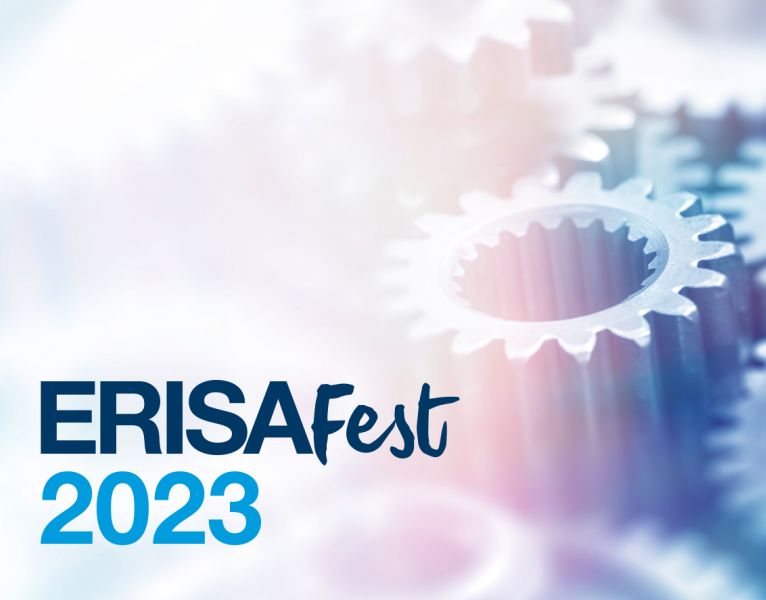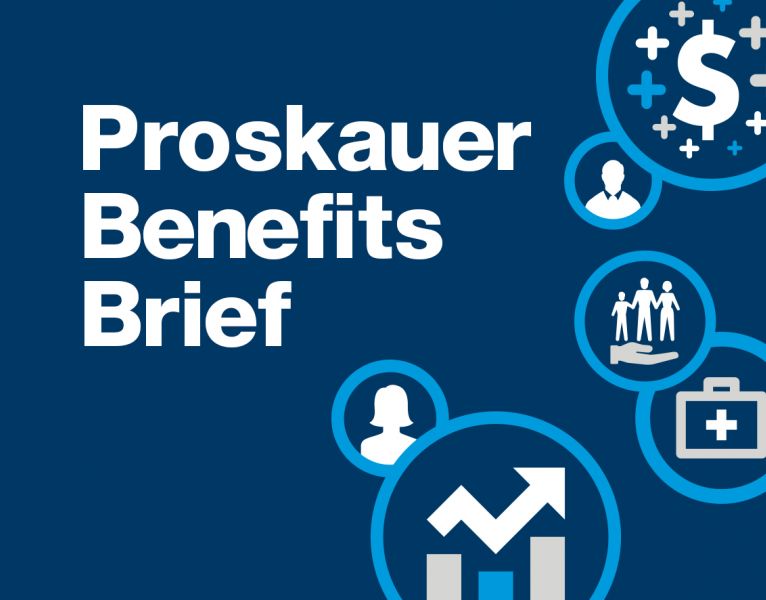In addition to the excitement of the upcoming outdoor concert season, Proskauer’s lawyers are anxiously awaiting VERY different forms of entertainment:
- the next installment of the never-ending saga of U.S. Department of Labor (“DOL”) guidance on who is considered an investment advice fiduciary, including whether the fiduciary standard applies to advice on whether to take a rollover;
- finalization of the DOL’s QPAM Exemption amendment proposal; and
- resolution of court challenges to the DOL’s final “ESG” rules.
We discussed these developments at ERISAFest 2023. If you missed it, feel free to reach out to your Proskauer contact for a recording, and be sure to sign up next year!
While we wait with baited breath to see what happens next (and hopefully catch a few actual great outdoor shows in the meantime), here is the latest on these important ERISA issues:
DOL Fiduciary Rule
As discussed in further detail here and here, for years now, the DOL has been attempting to expand what it means to be providing “investment advice” for purposes of determining whether an advice provider is a “fiduciary” to an ERISA plan or an “individual retirement account” (“IRA”) for purposes of the Employee Retirement Income Security Act of 1974, as amended (“ERISA”), and Section 4975 of the Internal Revenue Code of 1986, as amended (the “Code”). In particular, the DOL has long sought to treat advice regarding rollovers as fiduciary investment advice, notwithstanding prior DOL guidance indicating such advice was not so covered.
By way of background, under Section 3(21) of ERISA and Section 4975(e)(3) of the Code, there are three ways for a person to be considered a “fiduciary” with respect to an ERISA plan or an IRA:
- The person exercises any discretionary authority or control respecting management of the ERISA plan or the IRA or with respect to the management or disposition of its assets;
- The person renders “investment advice” for a fee or other compensation, direct or indirect, or has any authority or responsibility to do so; or
- The person has any discretionary authority or responsibility in the administration of the ERISA plan or the IRA.
The seemingly never-ending “fiduciary rule” saga relates only to the second prong above – rendering “investment advice” for a fee. Under a “five-part test” initially set forth in a 1975 DOL regulation, a person is considered to be providing “investment advice” for these purposes only if the person: (i) renders advice to the ERISA plan or IRA as to the value of securities or other property, or makes recommendations as to investing in, purchasing or selling securities or other property, (ii) on a regular basis, (iii) pursuant to a mutual agreement, arrangement, or understanding with the ERISA plan, the ERISA plan fiduciary or the IRA owner that, (iv) the advice will serve as a primary basis for investment decisions with respect to the ERISA plan’s or IRA’s assets, and (v) the advice will be individualized based on the particular needs of the ERISA plan or IRA. A person who meets all five prongs of the test and receives direct or indirect compensation will be considered an “investment advice” fiduciary with respect to the applicable ERISA plan or IRA.
Historically, service providers have often taken the position that advice on whether to leave money in an ERISA plan or to roll over to an IRA was not provided on a “regular basis” and/or was not provided pursuant to a “mutual” agreement, arrangement or understanding that the advice would serve as a “primary basis” for the decision. Further, in DOL Advisory Opinion 2005-23A (the “Deseret Letter”), the DOL stated that advice to roll assets from an ERISA plan to an IRA was not “investment advice,” because the decision of whether to take a distribution or rollover was not “advice or a recommendation concerning a particular investment,” and “[a]ny investment recommendation regarding proceeds of a distribution would be advice with respect to funds that are no longer assets of the plan.”
In 2016, the DOL replaced the “five-part test” with a new fiduciary regulation that significantly expanded the scope of “investment advice.” However, that rule was vacated by the U.S. Court of Appeals for the Fifth Circuit in 2018. Following that decision, the DOL reinstated the “five-part test.”
In 2020, the DOL issued Prohibited Transaction Class Exemption 2020-02 (“PTE 2020-02”) which allows “investment advice” fiduciaries to provide advice that affects their compensation and to engage in certain otherwise prohibited “principal transactions.” In the preamble to the exemption, the DOL disclaimed the Deseret Letter as an “incorrect analysis.” The DOL stated that the “better view” is that IRA rollover advice is a recommendation to liquidate or transfer the ERISA plan’s property to effectuate the rollover. The DOL also provided the following interpretation of the “regular basis” prong of the “five-part test”:
- advice to roll over can occur as part of an ongoing advice relationship or as the beginning of an intended future ongoing advice relationship;
- where an advice provider has been giving financial advice to an individual about investing in, purchasing, or selling securities or other financial instruments through an ERISA plan, any rollover advice provided to the individual would be considered part of an ongoing advice relationship that would satisfy the “regular basis” requirement; and
- similarly, where a rollover advice provider will be regularly giving financial advice with respect to the IRA following the rollover (even if it has not otherwise provided any advice before the rollover), the rollover advice would be the start of an advice relationship that would satisfy the “regular basis” requirement.
In 2021, the DOL reiterated this new “regular basis” interpretation in a set of Frequently Asked Questions that it issued regarding PTE 2020-02 (in particular, in FAQ 7).
However, on February 13, 2023, a federal district judge set aside the DOL’s expanded “regular basis” interpretation, concluding that the DOL’s new interpretation in FAQ 7 was arbitrary and capricious because it contradicted the language of the “five-part test.” (The case was American Securities Association v. U.S. Department of Labor, No. 8:22-cv-330 (M.D. Fla. Feb. 13, 2023).) The court held that the “regular basis” prong must be satisfied with respect to advice provided to the ERISA plan – and that any advice given after the rollover is not with respect to the ERISA plan and, therefore, is not part of the “regular basis” determination. Accordingly, the court vacated the DOL’s new interpretation.
The DOL initially indicated that it would appeal the decision, but it subsequently decided to withdraw the appeal. The DOL did not state a reason for withdrawing the appeal. One possibility is that the DOL will soon be issuing a new fiduciary “investment advice” regulation that will make interpretation of the “five-part test” moot.
If issued, the new regulation would have to go through a comment period before it can be finalized.
DOL’s QPAM Exemption Amendment Proposal
As we previously reported here, on July 27, 2022, the DOL issued notice of a proposed amendment (the “Proposed Amendment”) to Prohibited Transaction Class Exemption 84-14 (which is commonly referred to as the “QPAM Exemption”) that would significantly amend and add to certain of the exemption’s conditions, making it more difficult to become or to remain a “qualified professional asset manager” (“QPAM”) and to comply with the exemption. If finalized, the changes would have far-reaching effects on ERISA plans and IRAs (collectively, “Plans”), and on investment funds and separate accounts holding “plan assets” of one or more such Plans (“Plan Asset Entities”). The Proposed Amendment would affect investment managers of Plan Asset Entities (including eliminating the ability of certain managers to qualify as a QPAM), employers/plan sponsors of Plans, IRA owners and other fiduciaries responsible for engaging or monitoring investment managers, as well as counterparties to Plan Asset Entities seeking to rely on the QPAM Exemption.
The Proposed Amendment initially had a 60-day comment period that was set to expire on September 26, 2022, but the DOL later extended the comment period to allow a public hearing (held virtually on November 17, 2022) and to give more time for written comments. The extended comment period ended on April 6, 2023.
The DOL has not issued any further guidance since the end of the comment period, but there has been no indication that the QPAM Exemption would be left unchanged. Because the changes could require amendments to existing investment management agreements, Plan fiduciaries should consider taking stock of investment management agreements that could be impacted by any changes to the QPAM Exemption. Also, Plan fiduciaries who are in the process of hiring new investment managers should consider whether the new investment manager would be able to qualify as a QPAM if the exemption is amended as per the DOL’s proposal; and Plan fiduciaries should also review the impact that any such changes could have on the ability of existing investment managers to continue to qualify as QPAMs.
In addition, investment managers that are currently relying on the QPAM exemption to manage ERISA plan assets (or are considering doing so), should consider what effects the Proposed Amendment would have on their existing investment management arrangements and their continued ability and desire to qualify and act as a QPAM going forward, as well as the feasibility of relying on alternative prohibited transaction exemptions.
DOL’s ESG Rules
As we previously reported here and discussed here, on November 22, 2022, the DOL issued final rules that affect the consideration by ERISA fiduciaries of environmental, social and governance (“ESG”) factors when making investment decisions and exercising shareholder rights, such as voting proxies. These final rules generally became effective on January 30, 2023, except for certain proxy voting-related rules which will not take effect until December 1, 2023.
The final rules are intended to be more supportive of ERISA fiduciaries considering ESG factors in investment decisions as compared to the Trump administration’s 2020 regulations. Although the 2020 regulations did not specifically refer to “ESG” considerations, they distinguished between “pecuniary” and “non-pecuniary” factors, creating a perception that any consideration of ESG factors–even factors considered to be financially material–could expose ERISA fiduciaries to liability. The new final rules make clear that ESG can be relevant to evaluating investments, but the underlying principle that risk and return cannot be sacrificed has not changed.
The new final rules are currently being challenged in litigation and in Congress. The DOL is defending its rules in court, and President Biden recently vetoed legislation that would have invalidated the rules.
Proskauer continues to monitor developments in these areas (you know, when we are not at real concerts). As always, we are available if you have any questions.



